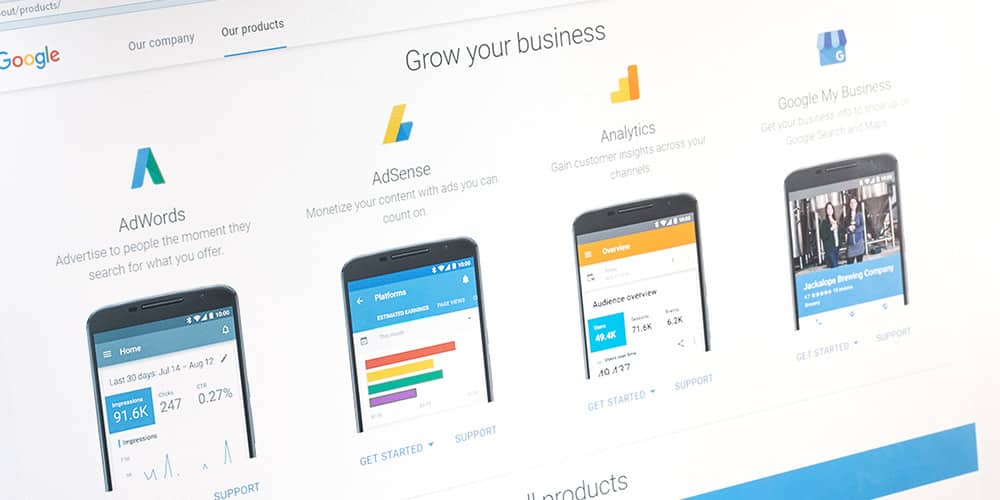
So, you have a sparkly new company website with plenty of compelling content, beautiful images and fabulous design. It tells your story, showcases your services and makes your products look irresistible. That’s fantastic – now all you need is visitors and lots of them…
There are, of course, a multitude of ways in which to promote your new website, from the sensible and straightforward to the downright wacky. This series of two articles aims to give an overview of the main areas you ought to be focusing on.
Search Engine Optimisation (SEO)
Ranking highly for organic searches is pretty high on the agenda for most business owners and marketers. After all, who doesn’t want that coveted number one Google spot? Luckily, most of the things that you need to be doing to boost your organic search results are fairly straightforward. Here they are, in order of importance:
- Page titles – The page title will be shown at the top of your users’ web browsers and each page on your website needs its own unique name. These titles should be relevant to the page, contain up to ten keywords and still be readable.
- Meta tags – The ‘description’ meta tag is particularly important for search engines like Google, since the first 50 or 60 words you include are shown directly in the search results and will greatly affect your click-through-rate (CTR).
- Headings and subheadings – It’s important to include relevant keywords in the headings and subheadings that make up your website content. Using H1, H2 and H3 headings ensures that search engines know what they’re looking for.
- Alt attributes – The only way that search engines can read your image, audio and video content is through what you tell them in the metadata. So including Alt attributes for every picture and video is vital.
- Hyperlinks – Rather than hyperlinks that say ‘Click here’ or ‘Read more’, make sure that the linking words are relevant keywords too. Saying, ‘Find out more about our range of hiking boots’ is much more helpful to both the search engines and to your visitors.
- Site map – Don’t forget to submit a site map to the major search engines to help search engines find their way around. Many platforms auto-update these pages as you add more content.
Links
Directories
One way of increasing web traffic is to get your site listed in relevant directories, both niche-specific and those that are more generic. Examples of the latter include Yahoo! Directory and Google Places. Some of these are paid and others free – you’ll need to do some research to find out which ones would be most helpful and likely to bring the best return on investment.
Reciprocal links
Ask for reciprocal links – This is a time-consuming strategy and one that should not be undertaken lightly. However, it can have great benefits and be worth the extra effort. Make sure that the sites you are requesting links from are in an appropriate niche and receive a similar amount of traffic to yours. For this strategy to work, there need to be genuine benefits on both sides.
Social media
Social media sites
Actively using the main social media sites – Facebook, Twitter, Google+, YouTube, LinkedIn and Pinterest, as applicable – not only allows you to keep abreast of what’s going on in your industry, but builds brand awareness and provides a significant funnel to your website at very little cost.
Forums
Although they’ve been around for a long time now, forum use shows no sign of slowing and contributing to these sites can be an effective way of establishing yourself as an expert in your field whilst also promoting your own website. Not one to be overlooked.
Blogging
Having your own company blog is one of the most effective ways of increasing search engine ranking organically and provides a great reason for your visitors to engage with your company and keep coming back to your site. If you don’t have the time or skill to do this yourself, it’s easy to outsource and inexpensive.
Go out on a limb
Create something wild and wacky. Whether it’s a full-blown publicity stunt in a public location, a viral video or a particularly radical social media contest, there’s no limit on what you might come up with. The key here is to go full-out – if you can inspire, entertain and engage the public directly, then you might find yourself with more website visitors than you ever thought possible. Just make sure you’re ready to handle the potential onslaught!
In Part Two of our mini-series, we will look at paid advertising strategies, email marketing and some old-school approaches that are still remarkable effective today. Don’t forget to check back next week to read on!


